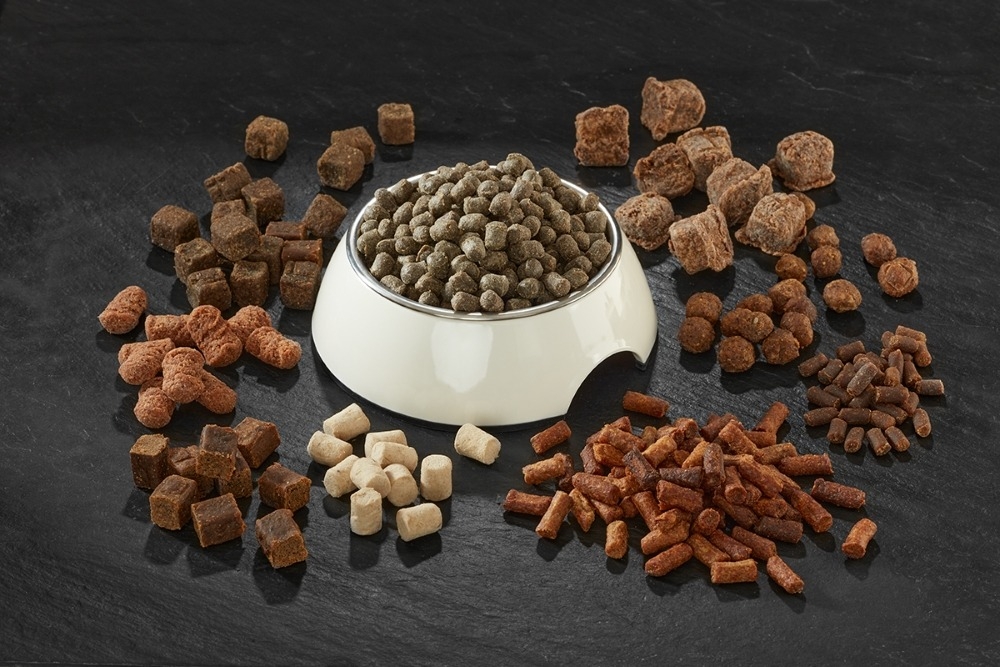IMARC Group’s “Pet Food Manufacturing Plant Project Report 2025: Industry Trends, Plant Setup, Machinery, Raw Materials, Investment Opportunities, Cost and Revenue” report provides a comprehensive guide on how to successfully set up a pet food manufacturing plant. The report offers clarifications on various aspects, such as unit operations, raw material requirements, utility supply, infrastructural needs, machinery models, labour necessities, transportation timelines, packaging costs, etc.
In addition to the operational aspects, the report also provides in-depth insights into pet food manufacturing plant setup, project economics, encompassing vital aspects such as capital investments, project funding, operating expenses, income and expenditure projections, fixed and variable costs, direct and indirect expenses, expected ROI, net present value (NPV), profit and loss account, and thorough financial analysis, among other crucial metrics. With this comprehensive roadmap, entrepreneurs and stakeholders can make informed decisions and venture into a successful pet food manufacturing unit.
Request for a Sample Report: https://www.imarcgroup.com/pet-food-manufacturing-plant-project-report/requestsample
What is Pet Food?
Pet food refers to specially formulated food products intended for consumption by domesticated animals such as dogs, cats, birds, and other companion animals. These products are designed to provide essential nutrients required for the health, growth, and overall well-being of pets. Pet food typically includes a combination of proteins, carbohydrates, fats, vitamins, and minerals, often derived from both animal and plant sources. It is available in various forms, including dry kibble, canned wet food, semi-moist formulations, and treats. The formulation of pet food adheres to nutritional standards set by regulatory bodies such as the Association of American Feed Control Officials (AAFCO) and the European Pet Food Industry Federation (FEDIAF). Specialized products are also available to meet specific dietary needs based on factors such as breed, age, size, and health conditions. The pet food industry continues to evolve in response to increasing consumer demand for premium, organic, and customized nutrition options for pets.
Market Trend and Drivers of Pet Food:
The growth of the pet food market is primarily driven by rising pet ownership, particularly among urban households, and the increasing humanization of pets. Consumers are treating pets as family members, leading to greater demand for premium, nutritious, and functional food products. Additionally, heightened awareness regarding pet health and wellness is encouraging the adoption of specialized diets, including grain-free, organic, and high-protein formulations. Technological advancements in food processing and packaging are also supporting innovation and longer shelf life, enhancing product appeal. E-commerce and direct-to-consumer models are further fueling market expansion by offering convenient access to a wide range of products. Moreover, the growing influence of social media and pet influencers is shaping purchasing behavior and brand visibility.
Key Aspects to Setup a Pet Food Plant:
- Location to Setup Plant
- Market Research
- Plant Layout
- Construction and Infrastructure
- Equipment/Machinery Procurement
- Documentation and Licenses
- Cost Analysis
Requirements to Setup a Facility:
- Funds
- Machinery
- Lands
Types of Costs to Setting up a Pet Food Factory:
- Land, Location and Site Development Cost
- Plant Layout Cost
- Machinery Requirements and Costs
- Raw Material Requirements and Costs
- Packaging Requirements and Costs
- Transportation Requirements and Costs
- Utility Requirements and Costs
- Human Resource Requirements and Costs
Project Economics:
- Capital Investments
- Operating Costs
- Expenditure Projections
- Revenue Projections
- Taxation and Depreciation
- Profit Projections
- Financial Analysis
Key Questions Answered in the Report:
- How has the pet food market performed so far and how will it perform in the coming years?
- What is the market segmentation of the global pet food market?
- What is the regional breakup of the global pet food market?
- What are the price trends of various feedstocks in the pet food industry?
- What is the structure of the pet food industry and who are the key players?
- What are the various unit operations involved in a pet food manufacturing plant?
- What is the total size of land required for setting up a pet food manufacturing plant?
- What is the layout of a pet food manufacturing plant?
- What are the machinery requirements for setting up a pet food manufacturing plant?
- What are the raw material requirements for setting up a pet food manufacturing plant?
- What are the packaging requirements for setting up a pet food manufacturing plant?
- What are the transportation requirements for setting up a pet food manufacturing plant?
- And more…
How IMARC Can Help?
IMARC Group is a global management consulting firm that helps the world’s most ambitious changemakers to create a lasting impact. The company provide a comprehensive suite of market entry and expansion services. IMARC offerings include thorough market assessment, feasibility studies, company incorporation assistance, factory setup support, regulatory approvals and licensing navigation, branding, marketing and sales strategies, competitive landscape and benchmarking analyses, pricing and cost research, and procurement research.
Services:
- Plant Setup
- Factory Audit Service
- Regulatory Approvals, and Licensing
- Company Incorporation
- Incubation Services
- Recruitment Services
- Marketing and Sales
Contact Us:
IMARC Group
134 N 4th St. Brooklyn, NY 11249, USA
Email: sales@imarcgroup.com
Tel No:(D) +91 120 433 0800
United States: +1-631-791-1145

